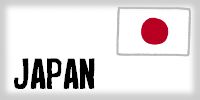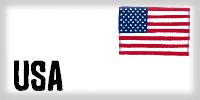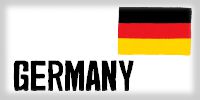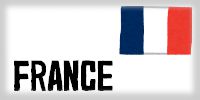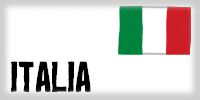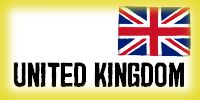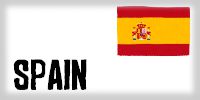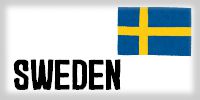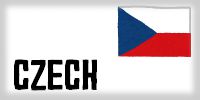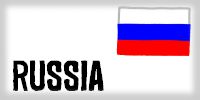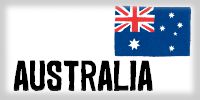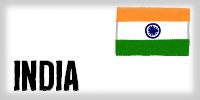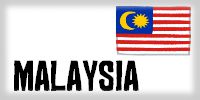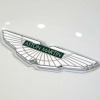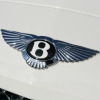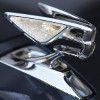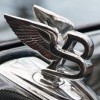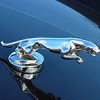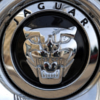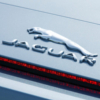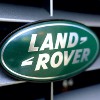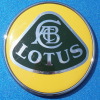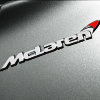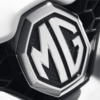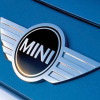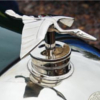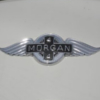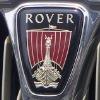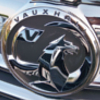|
Note: If you want to see the car photos of each brand, please tap or click the brand name.
|
ASTON MARTIN
|
The ASTON MARTIN emblem logo was designed based on the feathers of the scarab that live in Africa. In ancient Egypt, scarabs were so sanctified that they could be equated with the sun god, and have been used in various literature and ornamental designs. The current ASTON MARTIN emblem logo was designed by racer and artist Sammy Davis.
|
BENTLEY
|
The BENTLEY emblem logo has the flat type "Winged B" and the three-dimensional type "Flying B". "B" is derived from the initial for the founder Walter Owen Bentley.
When Bentley Motors was founded in 1919, the flat type emblem logo "Winged B" was designed by the founder's friend Gordon Crosby. This design represents the philosophy of pushing the boundaries of performance. The number of blades is set differently on the left and right for the purpose of preventing counterfeiting. For a period of time, the design was changed to a symmetrical design with 10 blades, but in the 1990s the original asymmetric blades were revived.
The three-dimensional type "Flying B" is the bonnet mascot that has been used since around 1920, but was abolished around 1970 due to pedestrian protection in the event of a collision. In 2006, the bonnet mascot was revived after clearing the legal regulations by adopting a completely retractable mechanism.
In 2019, the new design bonnet mascot with a light emitting mechanism was adopted for the new "Flying Spur" to commemorate the 100th anniversary of BENTLEY founding. The new mascot was designed by Hoe Young Hwang, who won the Bentley's designer competition, with reference to owls. Owls are generally stationary when nothing to do, but move with amazing power and agility when catching their food. Owls were chosen as a reference because its features are similar to the new Flying Spur. The spread of the mascot's feathers represents an owl gliding over the lake and chasing its prey.
|
JAGUAR
|
The JAGUAR emblem logo adopts a jaguar's face design on the front side of the vehicle, and "The Leaping Jaguar (also called Leaping Cat)" on the rear side of the vehicle. Previously, a three-dimensional mascot "The Leaping Jaguar" was adopted on the hood, but now it can no longer be adopted due to the vehicle safety standards.
|
|
LAND ROVER
|
The LAND ROVER emblem logo was designed by the company's engineer Maurice Wilks. There is no official explanation from LAND ROVER for the origin of emblem logo design. The rumor has it that the oval shape was inspired by a tin of fish, which Maurice Wilks was eating for lunch at the time. There are two theories about the background color green. The 1st theory: the green expresses nature, the 2nd theory: the green is derived from the color of British Racing Green adopted in the motor sports vehicles that represent the United Kingdom.
|
LOTUS
|
The LOTUS emblem logo is derived from the abstract lotus shape and was born in 1952, when the company was founded. The symbol above the letters "LOTUS" is a combination of the alphabets "A, C, B, C", which is derived from the initials of the company's founder Anthony Colin Bruce Chapman. The yellow background expresses the sun, energy and joy, and the green "British racing green" expresses speed and passion.
|
McLaren
|
The McLaren emblem logo has three theories about its red swoosh's origin.
The most probable theory: The shape of swoosh is related to vehicle aerodynamics. Specifically, it represents the swirling vortices generated from the rear of the vehicle in the wind tunnel.
The 2nd theory: The shape of swoosh is derived from the Marlboro's red logo, which was contracted as the F1 sponsor in 1981.
The 3rd theory: The shape of swoosh is derived from the flightless bird kiwi that lives in New Zealand, the hometown of the McLaren founder Bruce Leslie McLaren.
|
MG
|
The MG emblem logo was designed with "MG" engraved on the octagon.
|
MINI
|
The MINI emblem logo has the wings as a symbol of the speed. The design with wings on both sides was based on the first-generation emblem logo that was born in 1962. When the company was acquired by Rover Group in 1969, the second-generation emblem logo without wings was born. More than 30 years later, when the company was acquired by BMW in 2001, the current design was born and the wings on both sides were revived.
|
MORGAN
|
The MORGAN emblem logo is derived from the stork. The three-dimensional stork mascot was adopted on the front side of the tricycle manufactured from 1909 to 1939. After 1936, when the production of four-wheeled vehicles began, the design was changed to express the wings of a stork.
|
Rolls-Royce
|
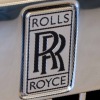
|
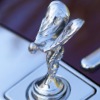
|
|
|
|
|
|
|
|
|
The Rolls-Royce emblem logo is the combination of R and R, which is derived from the initials of the names of Frederick Henry Royce and Charles Stewart Rolls. Frederick Henry Royce built the prototype vehicle, and the aristocratic businessman Charles Stewart Rolls was impressed with the vehicle. The color of the emblem logo inscription was originally red, but in 1934 Frederick Henry Royce died, and in mourning for Royce, the color of inscription was changed from red to black.
The three-dimensional mascot with spread wings "Spirit of Ecstasy" is attached on the bonnet, and the mascot is also colloquially known as Emily, Silver Lady and Flying Lady. The origin of this mascot was that John Douglas-Scott-Montagu, politician and editor of the car magazine "The Car Illustrated", published from 1902, wanted to attach a mascot suitable for his 1909 Rolls-Royce Silver Ghost. Montague asked his friend sculptor Charles Robinson Sykes to make the mascot. Sykes produced a small statue of a young woman in fluttering robes with a forefinger to her lips "The Whisper", which was modeled after Montague's secretary Eleanor Velasco Thornton. Based on this statue, the "Spirit of Ecstasy" was completed and was adopted as the official mascot of Rolls-Royce since 1912.
|
ROVER
|
The ROVER emblem logo is derived from the Viking ship, which survived powerfully in the European waters about a thousand years ago. The viking ship's journey through the sea was likened to the rover. In 1929, the first emblem logo depicting the Viking ship was born. After that, in 1963, the shape of the radiator grill was changed and at the same time the Viking ship was changed to the latest design.
John Kemp Starley and William Sutton established the bicycle manufacturing company Starley & Sutton Co, the predecessor of ROVER in 1878. ROVER began manufacturing automobiles in 1904 and has grown into the Rover Group with "MINI", "MG" and "Land Rover" in its long history. Eventually, as a result of ROVER being acquired by various companies such as BMW since the 1990s, the brands under Rover were sold off. Currently, the Indian car company TATA owns the trademark along with the Land Rover brand, but the Rover brand name models have disappeared even now.
|
VAUXHALL
|
The VAUXHALL emblem logo is derived from the flag-bearing Griffin (Griffon: French). The griffin has the head and wings of an eagle, and the body of a lion. An eagle is a symbol of the sky, a lion is the king of the land.
|

 English -
English - 